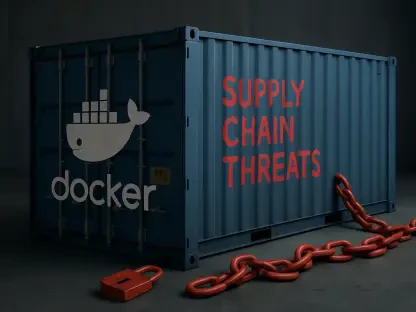In an era where cloud computing has long been hailed as the ultimate solution for scalability and cost-efficiency, a striking trend has emerged: dedicated servers are making a powerful comeback. Recent industry surveys reveal that over 80% of organizations across various sectors are returning to dedicated infrastructure to tackle the immense computational demands of artificial intelligence (AI) and the stringent requirements of data compliance. This roundup dives into diverse perspectives from IT professionals, industry leaders, and sector-specific insights to uncover why dedicated servers are reclaiming their spot in enterprise environments. The purpose is to synthesize opinions and tips from multiple sources, offering a comprehensive view of this unexpected shift and its implications for modern IT strategies.
Exploring the Revival of Dedicated Servers
Why AI Workloads Demand High-Performance Hardware
A recurring theme among IT experts is the unparalleled need for raw computational power in AI model training and inference. Many technology leaders emphasize that while public cloud solutions offer flexibility, they often fall short in delivering the consistent, high-speed performance required for AI tasks. A significant survey finding indicates that 86% of organizations prioritize dedicated servers for performance-intensive workloads, highlighting their critical role in cutting-edge applications.
Another viewpoint focuses on the limitations of cloud environments when handling massive datasets. Industry discussions suggest that latency issues and shared resource constraints in cloud setups can hinder AI progress, pushing companies to opt for dedicated hardware where performance is predictable and optimized. This perspective is particularly strong among tech-driven sectors aiming to maintain a competitive edge.
Some opinions also point to the cost-benefit analysis of dedicated servers for AI. While initial investments may be higher, several IT managers argue that long-term savings on performance bottlenecks and tailored configurations often outweigh the recurring costs of cloud subscriptions. This balance of power and economy is reshaping infrastructure decisions in innovative fields.
Compliance Pressures Redirecting Data Strategies
In sectors like healthcare and finance, compliance with strict regulatory frameworks remains a top concern, driving a notable shift away from public cloud solutions. Insights gathered from professionals in these industries reveal a hesitation to store sensitive data in shared environments, with over 50% expressing concerns about security and regulatory risks. Dedicated servers, with their isolated setups, are seen as a safer bet for meeting legal standards.
Government and financial sectors, in particular, showcase high adoption rates of dedicated infrastructure, with figures reaching 93% and 90% respectively. Feedback from these fields underscores the importance of physical security and direct control over data, which dedicated servers provide more reliably than multi-tenant cloud systems. This opinion is echoed by compliance officers who value the ability to audit and monitor systems closely.
A contrasting angle comes from smaller organizations within regulated industries, where budget constraints play a role. While acknowledging the security benefits of dedicated setups, some IT leaders note the challenge of justifying costs to stakeholders. Nevertheless, the consensus leans toward prioritizing compliance over convenience, cementing dedicated servers as indispensable for sensitive operations.
Customization as a Key Differentiator
The allure of customization and control is frequently cited as a major reason for the resurgence of dedicated infrastructure. A substantial 55% of surveyed IT professionals highlight the ability to tailor hardware and software configurations to specific needs as a primary motivator. This level of personalization is often unattainable in standardized cloud offerings, giving dedicated servers a unique edge.
Emerging trends also show that even micro-businesses, with a 68% adoption rate, are turning to dedicated environments for niche requirements. Industry opinions suggest that predictable pricing models associated with dedicated hardware appeal to smaller entities seeking to avoid the fluctuating costs of cloud services. This democratization of access is redefining perceptions of dedicated servers as tools for all business sizes.
Challenging outdated notions, many technology advocates argue that dedicated servers are far from legacy relics. Their adaptability to modern demands, such as integrating with specialized applications or supporting unique workloads, positions them as vital components in a tech-forward landscape. This evolving narrative is gaining traction across diverse organizational contexts.
Barriers to Broader Implementation
Despite the enthusiasm, hurdles to wider adoption of dedicated servers persist, with communication gaps being a prominent issue. Nearly a third of IT professionals report difficulties in conveying the value of dedicated infrastructure to non-technical leadership, often leading to hesitancy in investment. This insight reflects a broader challenge of aligning technical needs with business priorities.
Additional feedback points to scalability limitations as a concern for some organizations. While dedicated servers excel in performance, a quarter of respondents call for easier expansion options to match the elasticity of cloud platforms. Suggestions for improvement also include better access to modern developer tools, noted by 15% of professionals, to enhance usability in dynamic environments.
Sustainability is another area drawing attention, with 14% of IT leaders advocating for energy-efficient practices in dedicated server operations. Balancing these challenges against the undeniable benefits of control and performance remains a key discussion point. Many believe that innovation in management tools and green technologies could address these gaps, paving the way for broader acceptance.
Strategic Perspectives for IT Decision-Makers
Drawing from various industry voices, dedicated servers are increasingly viewed as essential for addressing AI, compliance, and performance demands, with 53% of professionals deeming them critical to operations. A common tip is to conduct thorough workload assessments to determine whether dedicated or cloud environments better suit specific tasks. This strategic approach ensures resources are allocated efficiently based on organizational goals.
Another piece of advice centers on bridging the communication divide with leadership. Several IT managers suggest framing infrastructure choices in terms of business outcomes, such as enhanced security or cost predictability, to secure buy-in. Fostering dialogue with non-technical stakeholders is seen as vital to navigating budget approvals and long-term planning.
A hybrid model also emerges as a popular recommendation, blending the strengths of cloud flexibility with the reliability of dedicated servers. Insights from enterprise settings advocate for a balanced infrastructure mix to optimize cost, security, and scalability. This pragmatic strategy resonates with organizations aiming to stay agile while safeguarding critical operations.
Reflecting on the Resurgence of Dedicated Infrastructure
Looking back on the discussions, it is evident that dedicated servers have carved out a significant niche in enterprise IT, fueled by the pressing needs of AI workloads and regulatory compliance. Diverse opinions from IT professionals across industries paint a picture of a technology landscape undergoing a subtle yet impactful reset, where control and performance take precedence for many critical applications.
A notable takeaway is the consensus on the complementary role of dedicated servers alongside cloud solutions, rather than a direct replacement. This nuanced balance highlights how organizations have adapted to leveraging the strengths of both environments, tailoring their infrastructure to meet specific demands with precision.
Moving forward, IT leaders are encouraged to reevaluate their infrastructure strategies, considering hybrid models that capitalize on dedicated servers for high-stakes tasks. Exploring advancements in scalability tools and sustainable practices is also advised to address lingering challenges. This ongoing dialogue promises to shape a more resilient and adaptive digital framework for enterprises navigating an ever-evolving technological terrain.









